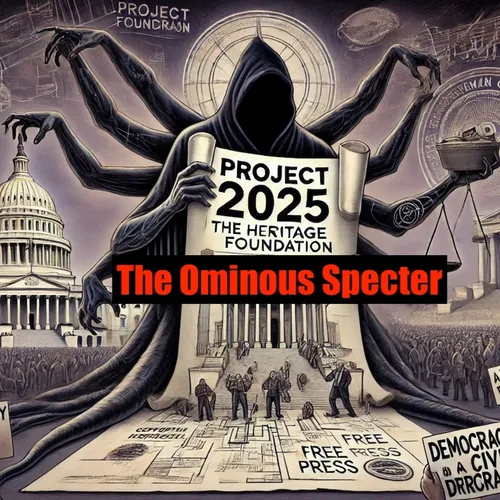Radical Restructuring Ahead: Project 2025's Blueprint for a Conservative Overhaul of the Federal Government
- Author
- Quiet.Please
- Published
- Sun 09 Feb 2025
- Episode Link
- https://www.spreaker.com/episode/radical-restructuring-ahead-project-2025-s-blueprint-for-a-conservative-overhaul-of-the-federal-government--64287519
As I delve into the intricacies of Project 2025, a sense of profound transformation and potential upheaval in American governance becomes increasingly clear. This initiative, spearheaded by the Heritage Foundation and crafted by over 400 scholars and policy experts from the conservative movement, is more than just a policy guide; it is a blueprint for a radical restructuring of the federal government.
At its core, Project 2025 is built on the unitary executive theory, an expansive interpretation of presidential power that aims to centralize greater control over the government in the White House. This vision is not new; it has roots in the Reagan administration and has been bolstered by conservative justices and think tanks like the Federalist Society and the Heritage Foundation. Kevin Roberts, the president of the Heritage Foundation, encapsulates this ambition when he states that all federal employees should answer directly to the president, a move that would significantly erode the independence of key agencies like the Department of Justice (DOJ), the Federal Communications Commission (FCC), and the Federal Trade Commission (FTC)[2].
One of the most striking aspects of Project 2025 is its approach to personnel management. The initiative proposes reclassifying tens of thousands of federal civil service workers as political appointees, allowing for their replacement with loyalists to a conservative president. This is part of a broader strategy to create a personnel database shaped by Trump's ideology, using a questionnaire to screen potential recruits for their adherence to the project's agenda. This move is eerily reminiscent of Trump's past actions, such as his use of Schedule F, a job classification he established in 2020 to fire more government employees than allocated, a classification that Biden later rescinded but Trump has vowed to restore[2].
The implications of such changes are far-reaching. For instance, Project 2025 calls for the dismissal of all Department of State employees in leadership roles by January 20, 2025, to be replaced by "acting" roles that do not require Senate confirmation. Kiron Skinner, who wrote the State Department chapter of Project 2025, has expressed a desire to replace most State Department employees with those more loyal to a conservative president, citing her belief that current employees are too left-wing[2].
Beyond personnel, the policy proposals outlined in Project 2025 touch on nearly every aspect of American life. The initiative seeks to roll back civil rights protections across multiple fronts, including cutting diversity, equity, and inclusion (DEI) programs and LGBTQ+ rights in healthcare, education, and workplaces. It also aims to restrict access to medication abortion and limit access to food assistance, which over 40 million people rely on monthly[1].
In the realm of healthcare, Project 2025 proposes pushing more people towards Medicare Advantage and other private options, affecting approximately 33 million people. This shift is criticized for potentially offering worse coverage and higher costs. Additionally, the project suggests eliminating the Head Start early education program, which serves over 1 million children, and cutting overtime protections for 4.3 million workers[1].
The economic and social fabric of the country is also a target. Project 2025 recommends eliminating funding for key public transportation projects, such as those funded by the Capital Investment Grants (CIG) program, which has been crucial for awarding federal grants to local communities for infrastructure projects. This could make it significantly harder for Americans without cars to commute to work or travel around their communities[1].
Furthermore, the project's vision for law enforcement is equally transformative. It views the DOJ as a "bloated bureaucracy" that has "forfeited the trust" of the American people,...
